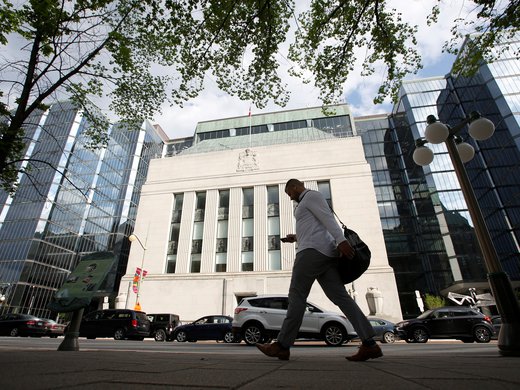The surprise announcement on Monday that Bank of Canada Governor Mark Carney would become the next Governor of the Bank of England has quite rightly emphasized that the appointment will be a challenging one. However, much of the media seems to have focused on Governor’s performance in the area of monetary policy and his reputation among central bankers. Yet, one of the reasons Governor Carney was sought after is because of his organizational skills. In response to the global financial crisis of 2007–9 the Bank of Canada has redistributed a considerable amount of resources towards financial stability issues. As the Bank of England resumes oversight not only over monetary policy, but also over matters dealing with financial stability, the resulting reorganization of the Bank of England will surely be one of Governor Carney’s most important challenges.
Next, he will have to ensure that the Bank is not seen as a backdoor source of funds for the UK Treasury thereby preserving its autonomy. The Bank, as such, is not independent but members of its Monetary Policy Committee (MPC) are. Mervyn King apologized for the fact that the government used the interest income accumulated as a result of its quantitative easing (QE) policy under which the Bank of England purchased government debt. Since this action amounted to an unannounced easing of monetary policy, the Governor had to restate the Bank’s position. This outcome is somewhat ironic since the Bank, with some fanfare, made clear at the outset of the QE program that it was idemnified against losses on its purchases of government bonds. The fear was that a rise in the Bank’s policy rate would produce a fall in bond prices and leave the Bank to absorb the losses. Such indemnification against losses is fairly standard among central banks that are independent and the Bank of Canada has a similar policy.
There has also been some discussion about the challenge Mark Carney faces because he will move from a committee structure whose deliberations are closed to the public (no minutes are published) to a structure where minutes are published shortly after the MPC announces its policy decisions (see the Globe and Mail piece that makes this point). “The level of open dissent and debate is the greatest difference between the Fed and the Bank of Canada. "…He will find it harder to own the spotlight in Britain. At the Bank of England’s policy committee, Mr. Carney will be first among equals, rather than the alpha in a pack. British policy makers each get a vote, and sometimes they break from the consensus. They also speak their minds.”
Statements such as these reveal a misunderstanding about how committees work, the relative effectiveness of open versus closed committees, and the role of the Governor. First, while the Governor is technically first among equals — the same is true at the US Fed — the record of voting is almost always lopsided. This indicates that there is considerable consensus even in committees that publish minutes of their deliberations. The reasons are straightforward: the Governor (or the Fed Chair) often sets out the motion concerning the direction of monetary policy and, if he is the last to vote, the dynamics about how committees function predict that there are perils in disagreeing with the Chair. Even if this is not the case disagreements between experts on the committee are always carefully spelled out to minimize any internal conflicts becoming public. In addition, since committee members are well aware that their views will be published, the resulting minutes are carefully crafted documents that provide context for disagreements of the kind that markets not only expect but are sought out as evidence that the policy deliberations are taken seriously. Disputes will be discussed in pre-meetings and outside of the public’s or the committee’s view.
The fact that the Bank of Canada does not release minutes of its meetings does not imply that consensus rules. The Bank of Canada’s Governor is the one who is statutorily responsible for the conduct of monetary policy and it is quite likely that frank discussions take place inside the Governing Council. The fact that disagreements are not aired in public does not imply that there are no disagreements inside the Bank of Canada. Moreover, members of the FOMC in the US are also accountable to their districts while members of the UK’s MPC are individually accountable. This gives them the latitude to speak a little more freely but disagreements with the consensus are always finely balanced. The location of accountability for members of the Bank of Canada’s Governing Council rests elsewhere and cannot be compared to the UK or US cases. Hence, they are simply not as free to spell out their personal views and markets would be shocked if they did. In other words, the institutional environment policy makers operate under matters. Mervyn King is the one who has to deal with the Chancellor of the Exchequer and the members of Parliament and write letters to him when the inflation target is missed. Similarly, Ben Bernanke is the one who testifies in front of Congress and is appointed by the President subject to Congressional approval. They are more than first among equals.
In any event, dealing with the relative openness of the UK’s MPC will likely be the least of Mark Carney’s concerns when he becomes Governor of the Bank of England.


